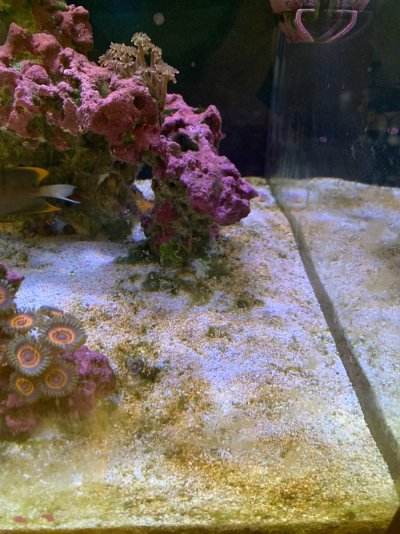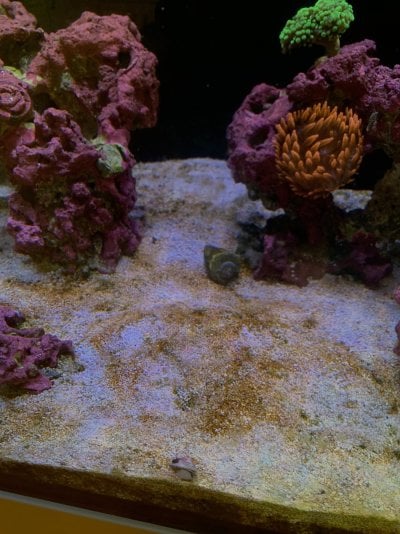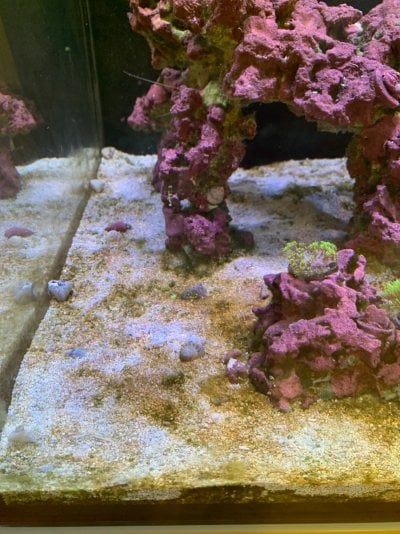So tank has been up and running over a little over a year. During that year I've battled dinos twice (both being LCA dinos) by dosing phosphate and spongExcel daily and was successful. Well I recently upgraded to new lights as the par on the old light was really weak. (zoa's were stretching a lot even though they were in direct light). The new lights I got are Gen5 XR30 Blue running AB+ at 25% light intensity, All channels at 100%. Pretty sure the new lights caused hair algae to bloom so I scaped and made the mistake of not sucking up the hair algae. Now I have chunks of hair algae growing on the sand and phosphate's are detectable, only cause I'm dosing phosphate. My question is the brown dust on the sand is that dinos or diatoms? Phospahtes are between 0.03-0.08. I've read that hair algae takes in nutrients very quickly so I'm lost on how to remove hair algae without bottoming out phosphates. CUC plenty, as I have emerald crabs, hermits, nassarius snail, sand sifting starfish, tiger conch, fox face, sailfin and bristle tooth tang, and algae blenny. Any advice would be appreciated.
Parameters:
Phosphate 0.03-0.08
Nitrate 10-20



Parameters:
Phosphate 0.03-0.08
Nitrate 10-20





















